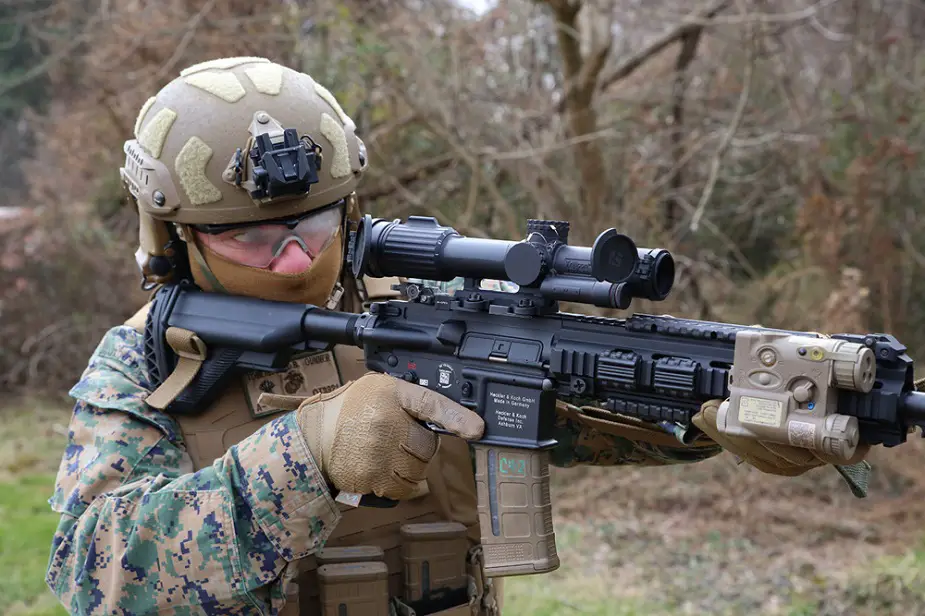In January, Marine Corps Systems Command’s Program Manager for Infantry Weapons began fielding the Squad Common Optic—a magnified day optic comprising an illuminated and nonilluminated aim-point designed to improve target acquisition and probability-of-hit with infantry assault rifles.
Follow Army Recognition on Google News at this link

The SCO is an improved optic that improves target acquisition and probability of hit with infantry assault rifles. Marine Corps Systems Command began fielding the system to infantry and infantry-like units this year. (Picture source: US Marine Corps)
The SCO can be attached to the M4 and M4A1 Carbine as well as the M27 Infantry Automatic Rifle. It will supplement the attrition and replacement of the Rifle Combat Optic and the Squad Day Optic for each of those weapons for close-combat Marines.
“The Squad Common Optic provides an improved day optic to infantry and infantry-like communities, including reconnaissance units” said Tom Dever, project officer for Combat Optics at MCSC. “It’s a system that improves situational awareness and decreases engagement times, greatly benefiting Marines.”
The SCO enables Marines to identify targets from farther distances than the existing RCO system.
Roger Boughton, MCSC’s lead engineer for the SCO program, said the RCO has a fixed magnification, whereas the SCO provides a variable power. This means Marines can use the SCO to identify targets at both close and far distances, providing twice the visual range of the RCO.
“Having an optic that can reach out to longer distances will ultimately make the Marine a more lethal first-shot shooter,” said Boughton. “This means they can use less rounds to overwhelm an enemy.”
Maj. Kyle Padilla, MCSC’s optics team lead and an infantry officer, said the SCO is agnostic to the round and weapon system, which provides additional flexibility for Marines. This allows for movement to a different host weapon and accommodates the employment of the M855, M855A1 or future ammunition.
“It’s all about making an accurate decision,” said Padilla. “The SCO gives squad leaders or individual riflemen more time to make a decision to eliminate that threat if necessary.”
The system is also easy to assemble. The SCO includes a mount that prevents Marines from needing to carry tools to remove or exchange the optic, lightening the load for Marines.
“If you want to mount it onto the rail of the weapon, you don’t need a wrench to tighten anything,” said Boughton. “You just need your hands.”
The SCO program moved rapidly from program designation to fielding in just 16 months. After awarding a contract, PM IW conducted various user assessments, including a simulated 10,000-round fire exercise, during production verification testing to confirm performance and resolve issues.
During these evaluations, Marines raved about the benefits of the SCO and its improvement over the existing system.
“Being able to shoot farther, identify targets at greater ranges and be more accurate will make them more lethal,” said CWO4 David Tomlinson, MCSC’s infantry weapons officer. “Marines have expressed excitement over this capability.”
The program office anticipates the weapon reaching Full Operational Capability in fiscal year 2022.















